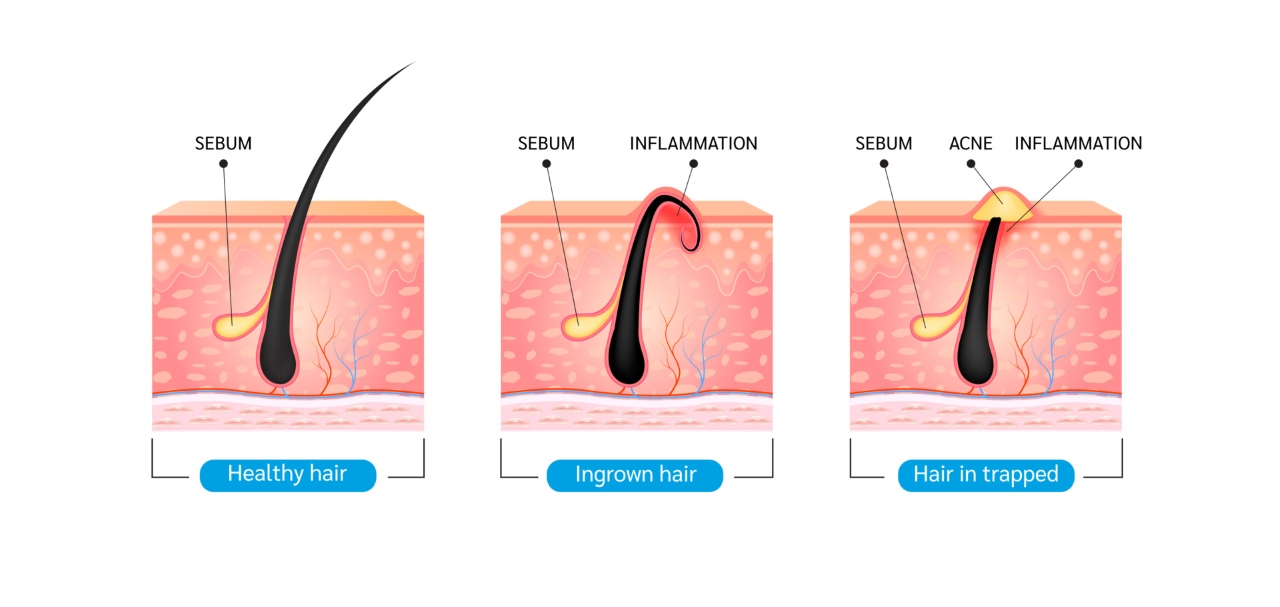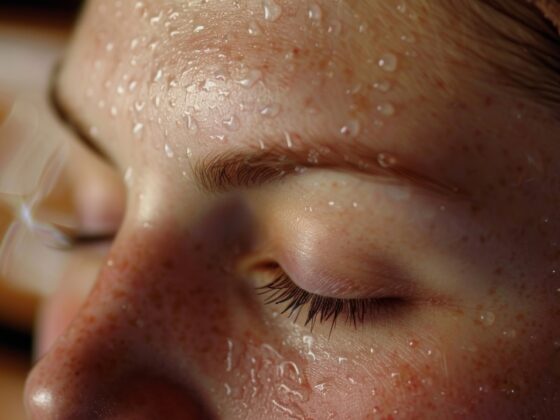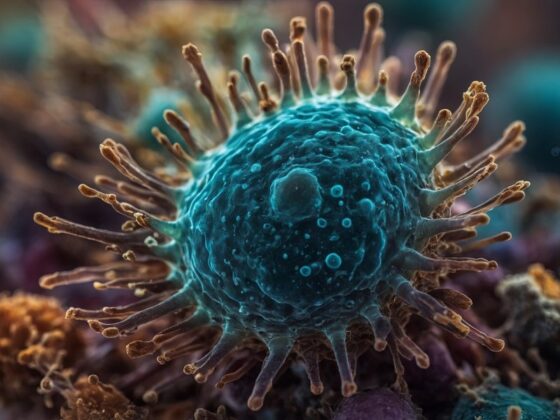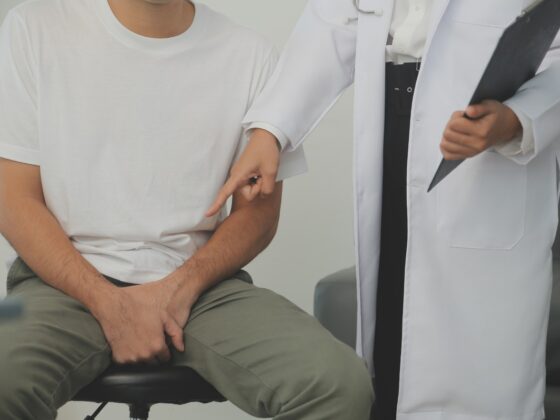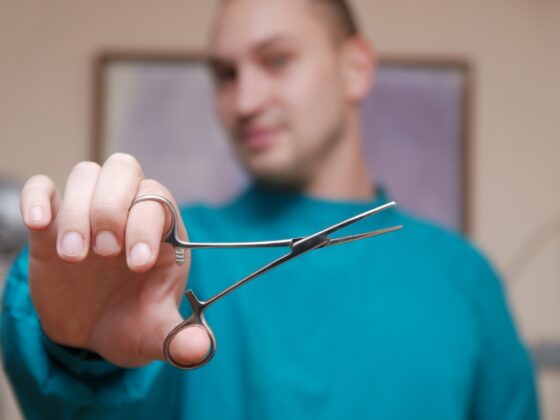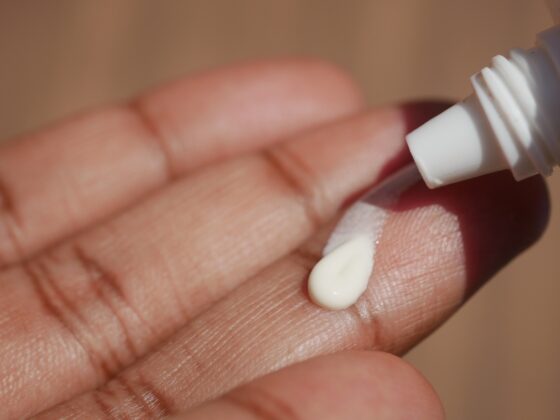Finding an unusual bump in your genital area can be alarming, but before you rush to your laptop and have Google tell you how many weeks you have left to live, there’s a good chance that you might simply be dealing with an ingrown hair.
Ingrown hairs are annoying, sometimes painful, and not exactly aesthetically pleasing, but most men will experience an ingrown at some point, especially those who shave or trim their pubic hair regularly. Let’s explore what these pesky bumps are, how to treat them safely, and how to prevent them from returning.
What Is Ingrown Hair on the Penis?
An ingrown hair occurs when a hair curls back on itself and grows into the skin instead of rising up from it. While they can appear anywhere on the body where hair grows, they’re particularly common in the pubic region due to the coarse nature of the hair.
How Do Ingrown Hairs Form
When you shave, the hair is cut at or below the skin’s surface. As it regrows, instead of pushing straight out through the follicle, it sometimes curls and penetrates the skin nearby. Your body treats this hair as a foreign object, triggering inflammation that creates the red, sometimes painful bump you see.
Is Ingrown Hair on the Penis Normal?
Yes, ingrown hairs on the penis and surrounding areas are completely normal, and they’re especially common among men who regularly shave or trim their pubic hair. While uncomfortable, they’re typically harmless.
What Causes Ingrown Hair on the Penis?
Shaving and Hair Removal Methods
Hate to break it to you rapid shavers, but improper shaving technique is the most common cause. Using a dull razor, shaving against the grain, or pulling the skin taut while shaving increases the risk of hairs becoming trapped under the skin. Electric trimmers can also create sharp-edged hairs that more easily pierce the skin as they grow back.
But that doesn’t mean you have to go au-naturel – if you feel like shaving helps improve size and confidence, you can still shave it all off – just do it the right way. Check out our guide on how to use a pubic hair trimmer correctly, and thank us later!
Tight Clothing and Friction
Wearing tight underwear or pants creates constant friction against your skin, which can force freshly cut hairs back into the follicle. So if you exercise frequently in tight-fitting workout clothes, this can also cause ingrowns.
Coarse or Curly Hair Types
If you naturally have thick, curly pubic hair, the bad news is you’re more prone to ingrown hairs. The natural curl makes it more likely to loop back and reenter the skin, especially after being cut short.
How to Identify an Ingrown Hair on the Penis
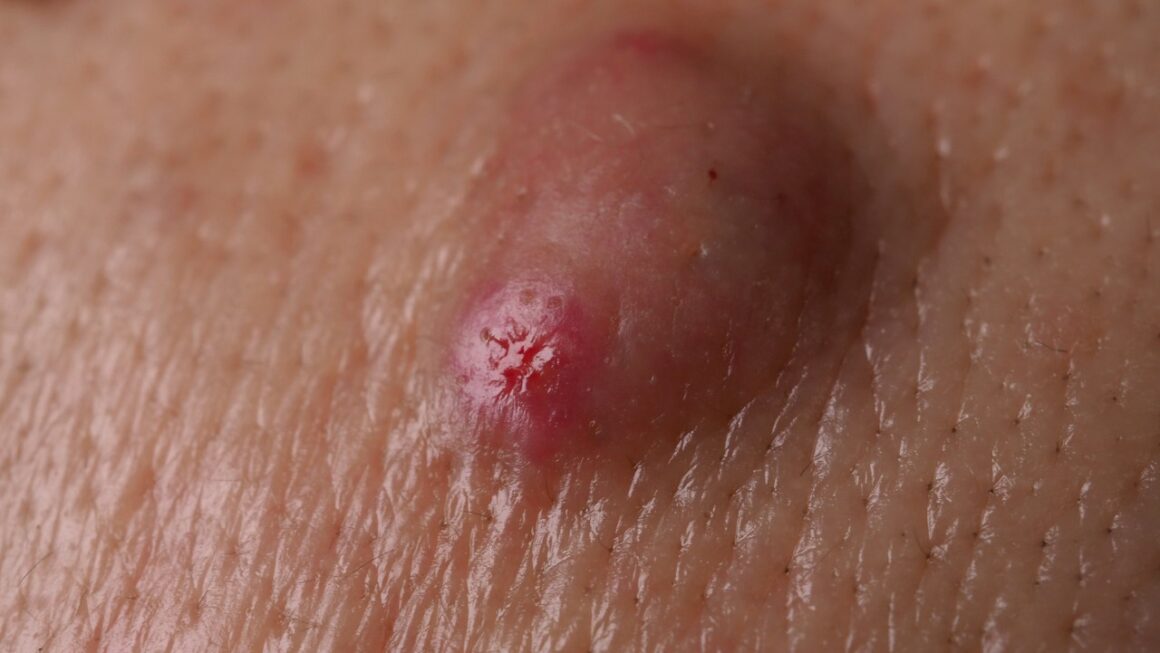
An ingrown hair on the penis shaft or surrounding area typically appears as:
- A small, round bump that may be red, white, or flesh-colored
- A bump with a visible hair trapped underneath the skin
- Tenderness or mild pain around the affected area
- Slight swelling or inflammation
- Occasional itchiness
Ingrown Hair vs. STD: How to Tell the Difference
Ingrown hairs typically appear as single, isolated bumps with visible hair, while STIs often present with clusters of bumps, unusual discharge, or other symptoms. If you’re unsure or have multiple symptoms, consult a healthcare provider for a proper diagnosis.
How to Get Rid of an Ingrown Hair on the Penis
Once identified, there are several approaches to safely remove an ingrown hair.
Safe Home Remedies
Start with gentle approaches to coax the hair out naturally:
- Apply warm compresses to the area for 10-15 minutes several times a day. This softens the skin and may help the hair rise to the surface.
- Gentle exfoliation with a soft washcloth can remove dead skin cells that might be trapping the hair.
- Over-the-counter products containing salicylic acid or glycolic acid can help exfoliate the skin and reduce inflammation, but use these carefully in the genital area.
Should You Pop or Tweeze an Ingrown Hair?
No! While tempting, aggressive extraction can lead to infection, scarring, and spreading bacteria. If the hair is visible at the surface, you can gently use sterilized tweezers to free it, but never dig under the skin. Simply free the hair without pulling it out completely, allowing it to continue growing normally.
When to See a Doctor
See a doctor if:
- The area becomes increasingly painful, swollen, or hot to touch
- You notice pus or spreading redness around the bump
- The ingrown hair doesn’t improve after a week of home treatment
- You develop fever or other signs of infection
How to Prevent Ingrown Hairs on the Penis
Prevention is always better than treatment when it comes to ingrown hairs, so here’s what we recommend to avoid these annoying bumps:
Proper Shaving Techniques
If you choose to shave your pubic area:
- Always use a sharp, clean razor
- Shave after a warm shower when hair is soft
- Use plenty of shaving gel or cream
- Shave in the direction of hair growth
- Rinse the blade frequently during shaving
- Apply an alcohol-free moisturizer after shaving
Choosing the Right Underwear and Clothing
If you keep getting recurring ingrowns, try opting for breathable, cotton underwear that isn’t too tight, and avoid synthetic materials that trap moisture and increase friction. When exercising, consider moisture-wicking underwear designed for activity, and change out of your sweaty clothes promptly once you’ve finished your workout.
Regular Exfoliation and Hygiene
Self-care helps! We’d recommend incorporating gentle exfoliation into your shower routine 2-3 times weekly to prevent dead skin cells from trapping hairs, and using a soft washcloth in circular motions around the genital area.
Final Thoughts
Ingrown hairs on the penis are a common and typically harmless grooming issue most men will experience at some point or another. With proper identification, gentle treatment, and preventative measures, you can minimize both their occurrence and discomfort. And remember – if you’re concerned about any unusual bump in your genital area, don’t hesitate to consult with a healthcare provider.
